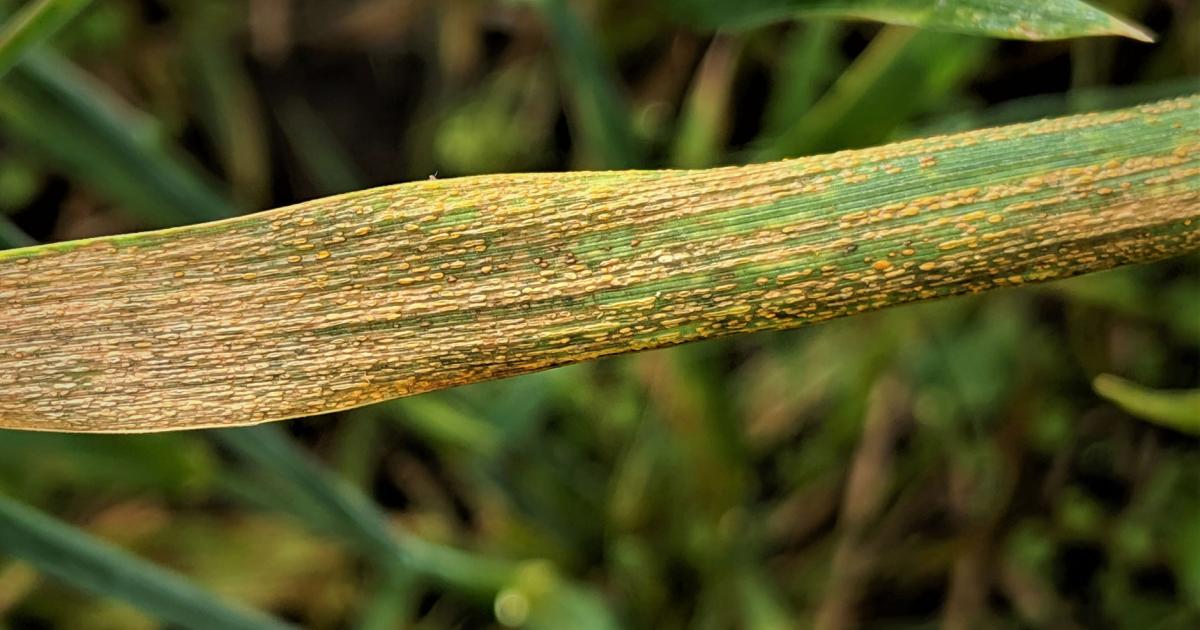Chickpea, also known as gram or Bengal gram, is a significant legume crop cultivated in many parts o ...
Wheat is a staple crop grown globally, but it is susceptible to various diseases that can significantly impact yield and quality. Understanding the causes and identifying the diseases early is crucial for effective management and treatment. This article covers common wheat diseases, their causes, symptoms, and recommended treatments.
गेहूं की फसल किसानों के लिए अत्यंत महत्वपूर्ण है, लेकिन कई बीमारियाँ इसकी पैदावार को प्रभावित कर सकती हैं। इन बीमारियों के कारण न केवल उपज कम होती है बल्कि फसल की गुणवत्ता भी प्रभावित होती है। इस लेख में, हम गेहूं की प्रमुख बीमारियों और उनके इलाज पर चर्चा करेंगे।
गेहूं की फसल कई प्रकार की बीमारियों से प्रभावित हो सकती है। इनमें से कुछ प्रमुख बीमारियाँ निम्नलिखित हैं:

यह बीमारी मुख्यतः गीली और नम जलवायु में फैलती है। पत्तियों पर भूरे या काले धब्बे दिखते हैं, जो धीरे-धीरे बड़े हो जाते हैं और पत्तियों को सूखा देते हैं।
धब्बों के इलाज के लिए दवा स्प्रे जैसे कि चाकोटिल या कर्बेन्डाजिम का उपयोग किया जा सकता है। बीमारी के फैलने से पहले और फसल के फली बनते समय इन दवाओं का छिड़काव करना चाहिए।
यह भी पढ़ें: गेहूँ की उन्नत खेती
यह बीमारी पत्तियों और तनों पर सफेद पाउडर जैसा पदार्थ बनाती है। यह अत्यधिक नमी और गर्मी में फैलती है और पौधों की वृद्धि को प्रभावित करती है।
इस बीमारी का इलाज फंगीसाइड्स जैसे कि टीबेंडाज़ोल या सल्फर पाउडर से किया जा सकता है। संक्रमण के पहले लक्षण दिखने पर तुरंत स्प्रे करें।
यह बीमारी गेहूं की पत्तियों, तनों और बालियों पर भूरे या लाल रंग के धब्बे बनाती है। यह फफूंदजनित बीमारी है और गेहूं की फसल की गुणवत्ता और उपज को गंभीर रूप से प्रभावित करती है।
झुलसा बीमारी के इलाज के लिए फंगीसाइड्स जैसे कि ट्रायडेमेफोन या एचएक्सडीएन का उपयोग करें। इस बीमारी से बचाव के लिए सही समय पर स्प्रे करना और फसल चक्र का पालन करना महत्वपूर्ण है।

इस बीमारी के कारण पत्तियों पर गहरे भूरे या काले धब्बे बनते हैं। यह बीमारी आमतौर पर कम आर्द्रता और उच्च तापमान में फैलती है।
धब्बेदार बीमारी के इलाज के लिए फंगीसाइड्स जैसे कि क्लोरथालोनिल या मेटलैक्सिल का उपयोग करें। रोग के फैलने से पहले और बाद में नियमित रूप से स्प्रे करें।
गेहूं की बीमारियों का सही समय पर उपचार न केवल उपज को बचाने में मदद करता है बल्कि फसल की गुणवत्ता को भी बनाए रखता है। उपयुक्त दवाओं का उपयोग और सही समय पर स्प्रे करना इन बीमारियों से बचाव के प्रमुख उपाय हैं। हमेशा अपने खेत की स्थिति और बीमारी के लक्षणों के अनुसार दवाओं का चयन करें और विशेषज्ञ की सलाह लें।
Leaf rust is caused by the fungus Puccinia triticina. It appears as reddish-brown pustules on the leaves and stems. These pustules can coalesce and cover large areas of the leaf surface, reducing photosynthesis and ultimately impacting grain production.
Treatment: To manage leaf rust, use resistant wheat varieties and apply fungicides such as tebuconazole or propiconazole at the first sign of infection. Ensure proper crop rotation and remove infected plant debris to reduce the risk of recurrence.
Yellow rust, also known as wheat stripe rust, is caused by Puccinia striiformis. It is characterized by yellow or orange stripes on the leaves, which can turn brown as the disease progresses. This rust affects the plant’s ability to photosynthesize, leading to reduced yield.
Treatment:Apply fungicides such as cyproconazole or epoxiconazole. Select resistant wheat varieties and follow good agricultural practices to prevent infection. Regular monitoring and timely application of fungicides can help control the disease.
Fusarium head blight, or scab, is caused by the fungus Fusarium graminearum. It affects the wheat heads, causing them to become bleached and shriveled. The disease can also produce mycotoxins, which can contaminate the grain and pose health risks.
Treatment: Use fungicides like tebuconazole or metconazole at the flowering stage to control Fusarium head blight. Implement proper field sanitation, avoid planting wheat after infected crops, and use resistant varieties to manage the disease effectively.
Wheat yellow dwarf is caused by several strains of the Wheat Yellow Dwarf Virus, transmitted by aphids. Symptoms include yellowing of the leaves, stunted growth, and reduced yield. The virus affects the plant’s nutrient uptake and overall health.
Treatment: Control aphid populations through insecticide application or natural predators. Use resistant wheat varieties and practice crop rotation to reduce virus spread. Removing infected plants can also help manage the disease.
In addition to the specific diseases mentioned, wheat can be affected by various other pathogens and environmental stresses. General practices for disease prevention include selecting resistant varieties, ensuring proper soil management, and maintaining crop rotation. Regular monitoring and timely intervention are key to managing wheat diseases effectively.
Effective management of wheat diseases involves understanding the specific causes and symptoms of each disease and applying the appropriate treatments. By following recommended practices and using the right fungicides and insecticides, farmers can protect their wheat crops and ensure better yield and quality. Regular field inspections and staying informed about disease management strategies are essential for successful wheat cultivation.
0
0
Chickpea, also known as gram or Bengal gram, is a significant legume crop cultivated in many parts o ...
Mango is one of the most popular and widely cultivated fruits globally. However, mango trees are sus ...
The Brown Plant Hopper (BPH), scientifically known as Nilaparvata lugens, is one of the most notorio ...
Jhulsaa Rog, commonly known as "Blast Disease," is a significant threat to rice crops worldwide. Thi ...
Rice is a staple food for a large portion of the world's population, making its cultivation crucial ...
Rice (paddy) is one of the most vital staple crops in the world, feeding billions of people globally ...
Gardeners and farmers often rely on chemical pesticides to protect their plants from pests and disea ...